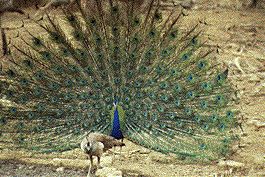Adaptations in sexual reproduction - Why do the sexes differ?

Sexual dimorphism is the existence of physical differences between the sexes.
Darwin contended that sexual dimorphism evolved by means of sexual selection. Darwin's main argument for the importance of sexual selection was comparative: his principal evidence came from looking at a large number of species. The comparison showed that the species in which males and females are more similar were more often monogamous. Species with brightly colored, large, or dangerously armed males are more often polygynous: several females mate with one male (and other males do not breed at all).
In a polygynous species a single male can potentially breed with more females than under monogamy; selection in favor of adaptations that enable males to gain access to females (whether by male competition or female choice) is proportionally stronger. Darwin therefore reasoned that polygynous species should have stronger sexual dimorphism than monogamous species.
Darwin's book The Descent of Man, and Selection in Relation to Sex (1871) contains a long review of sexual dimorphism in the animal kingdom. In humans, it seems, sexual dimorphism has decreased during our evolution. Some species, such as snakes, have almost no sexual dimorphism, but it is common in others and some birds such as peacocks (opposite) take it to spectacular levels.
| Next |



